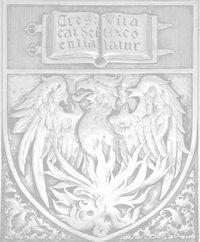
Drawn from the Library's extensive holdings of rare prints and books representative of renaissance studies of the history, science, art, and architecture of ancient Rome, the exhibition traces the varied responses of sixteenth-century scholars as they recovered, reconstructed and resurrected the "half-buried marvels" of Rome. The imagery of a restored and revived Rome was central to Renaissance humanism, which extended the recovery of antiquity into contemporary institutions and everyday fashion; the adaptation and, at times, imitation of antiquity in all its aspects accompanied the urban renewal of the "ruined wilderness" that Rome had become. Central to these projects were studies by early antiquarians, enriched with illustrations produced in the burgeoning engraving and etching workshops of Rome, Antwerp, and elsewhere. These images gave tangible from to the antiquarians' reconstructions and provided an inexpensive medium for the diffusion of their ideas throughout Europe. The prints were occasionally collected in volumes which came to be known as "Speculum Romanae Magnificentiae" (Mirror of the Magnificent Marvels of Rome). No two sets of the "Speculum" are exactly alike, since they were brought together by different collectors, at different times, and from various sources. The Exhibit features a four-volume "Speculum" from the University Library Collection, this rare item, acquired by William Rainey Harper in 1891, contains 994 prints and is the largest known set of these prints existent in the world.